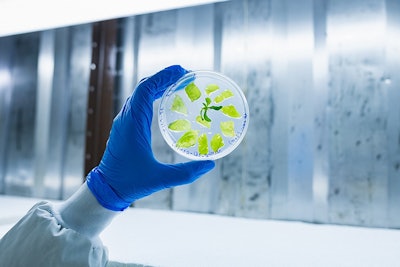
Tobacco plants could help the cultivated meat industry overcome one of its largest hurdles to commercialization.
“Cultivated meat companies face multiple technological challenges, that include isolation of cell-lines, development robust differentiation and growth protocols and very substantial scale-up of machinery and raw material production,” explained Dana Yarden, MD, co-founder of BioBetter.
“Many believe that the single major challenge is cell cultivation media cost, which is directly dependent on growth factors costs, as they constitute the major cost component.”
The high costs of a growth medium
Cultured meat is made using cells from animals that are grown in in a laboratory. The process involves the use of a growth medium to stimulate cell growth.
However, this growth medium can cost up to $400 a liter. One kilogram of cultured meat can require up to 600 liters of growth medium, so costs add up quickly, limiting the amount of cultured meat that is produced and making the product too expensive for the average consumer.
The benefits of a plant bioreactor
Using a plant bioreactor to produce cultivated meat – with tobacco plants as a base – could be a solution to this challenge.
This offers several benefits over previous approaches to create the meat alternative. In comparison to traditional bioreactors, plants use renewable energy, fixate CO2 and are biodegradable.
In addition, this provides an alternate use for tobacco plants, which currently has no place in the food-and-feed chain due to its bitter taste. As a bonus, tobacco plants have four growth cycles annually and can be harvested all year, resulting in a large output per square meter of growing space, noted Yardeen.
“Perhaps because of their structure, growth factors are difficult to produce by existing fermentation platforms in low enough costs and large enough quantities. Plants have an advantage in their ability to correctly express and fold even complex eukaryotic proteins,” Yarden said.




.jpg?auto=format%2Ccompress&fit=crop&h=167&q=70&w=250)













